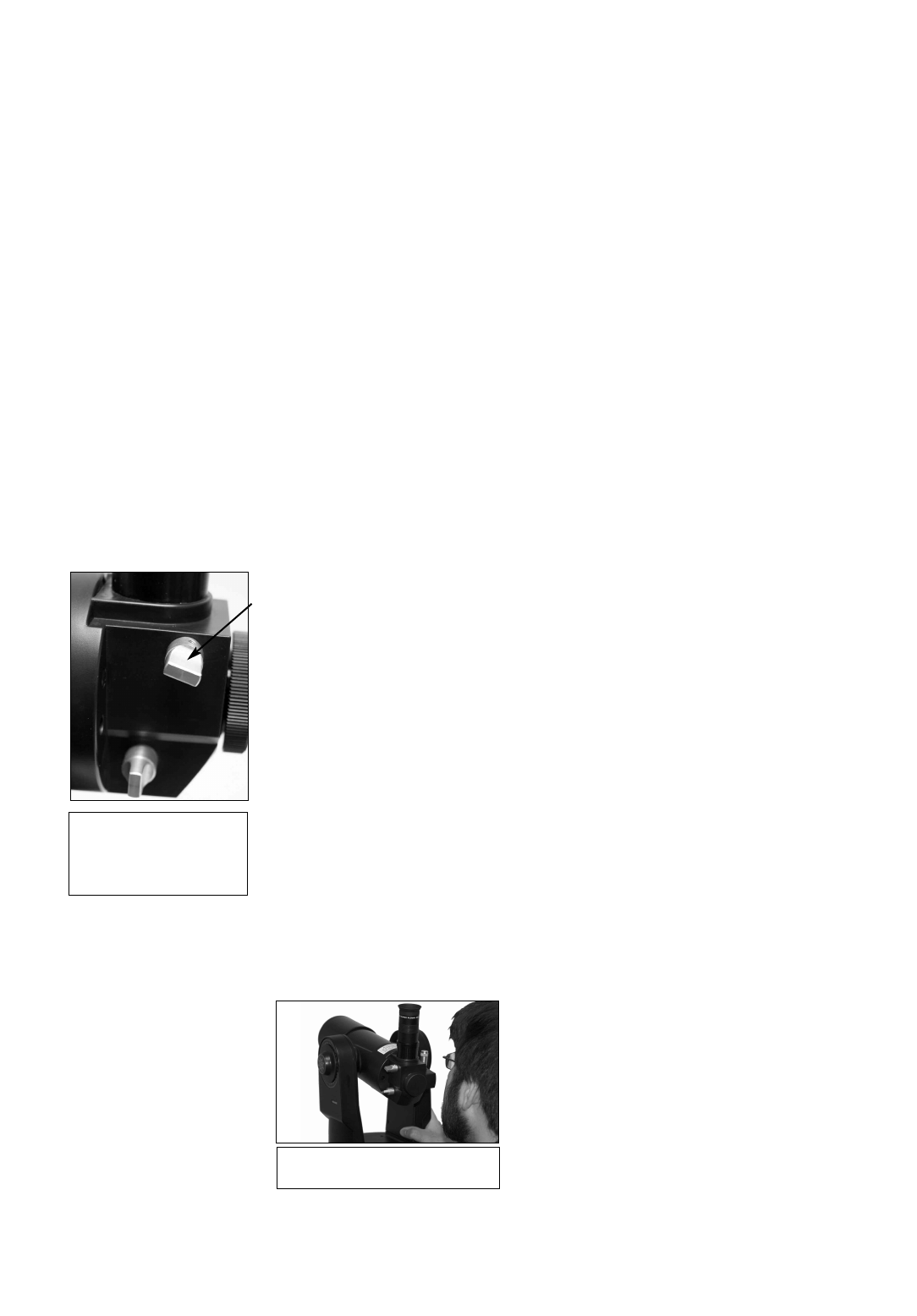
14
8.
Plug in the handbox:
Mak
e sure that the computer control panel power switch is in the
OFF position. Remove AutoStar from the packing materials and plug it into the HBX port.
Flip the Power Switch on the computer control panel to the ON position. The copyright
message lights on AutoStar’s LCD display. See
Fig. 11b.
9. Accept the Sun Warning:
Press the key prompted by AutoStar to accept the Sun warning.
Choosing an Eyepiece
A telescope’s eyepiece magnifies the image formed by the telescope’s main optics. Each eye-
piece has a focal length, expressed in millimeters, or “mm.” The smaller the focal length, the
higher the magnification. For example, an eyepiece with a focal length of 9mm has a higher
magnification than an eyepiece with a focal length of 25mm.
Y
our telescope comes supplied with two standard eyepieces.
Low power eyepieces offer a wide field of view, bright, high-contrast images, and excellent eye
relief during long observing sessions.To find an object with a telescope, always start with a low
power eyepiece. When the object is located and centered in the eyepiece, you may wish to
switch to a higher power eyepiece to enlarge the image as much as practical for prevailing see-
ing conditions.
Note: Seeing conditions vary widely from night-to-night and site-to-site. Turbulence
in the air, even on an apparently clear night, can distort images. If an image
appears fuzzy and ill-defined, back off to a lower power eyepiece for a more well-
resolved image (
Fig. 14a and 14b, page 17).
The power, or magnification of a telescope is determined by the focal length of the telescope
and the focal length of the eyepiece being used. To calculate eyepiece power, divide the tele-
scope's focal length by the eyepiece's focal length.
E.g., Assume you are using a 25mm eye-
piece. The focal length of the ETX-80AT is 400mm (see SPECIFICATIONS, page 35).
Telescope Focal Length ÷ Eyepiece Focal Length = Magnification
400mm ÷ 25mm = 16
The eyepiece power, or magnification is therefore 14x. However, your telescope also contains
a built-in 2 times Barlow. This means you also have to multiply magnification figure by two.
16 x 2 = 32
So your telescope has a 32 times magnification.
Manual Operation of the Telescope without AutoStar
If you wish to observe a distant land object, such as a mountain top or a bird, you can observe
by merely pointing the telescope and looking through the eyepiece. Assemble the telescope,
loosen the horizontal and vertical locks (
13 and 14, Fig. 1), and turn the telescope towards the
object you wish to observe. Sight along the top of the tube until you find the object. When the
object appears in the eyepiece, focus the image using the by turning the focus knob (
15, Fig.
1). Rotate the knob clockwise to focus on distant objects and counterclockwise to focus on
nearby objects.
You can also observe stars and objects in the night sky using this method, but note that objects
begin to slowly drift across the eyepiece field.This motion is caused by the rotation of the Earth.
As you become familiar with AutoStar operation, you can
counteract the drift using the automatic tracking feature in
the Setup menu (see
TO TRACK AN OBJECT AUTOMATICAL-
LY, page 16), or by using AutoStar's GO TO capabilities (see
GO TO SATURN, page 18).
Sight along the top of the telescope’s tube to line up objects
f
or viewing in the eyepiece. See
Fig.
13.
Fig.
13
:
Sight along the top of
the optical tube.
Fig. 12: To use Flip
Barlow, rotate the flip
control to the “down”
position.
